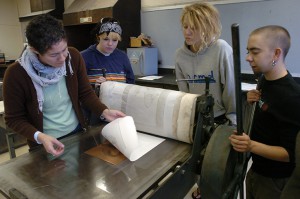It has been said that we are in the equivalent of the pre-printing press period and our information revolution hasn’t yet had its equivalent of the Reformation and 100 Years War.
What is the future of print media? Can it survive? Will there be any staff writers left?
It seems ironic that journalism is very much alive but print media is on the wane.
When it comes to print media, they are very cost-effective because of their traditional nature. Newspapers and Magazines have their own unique identity is not wrong to say that print media and digital media are interdependent.
One of the demerit of print media is, have the limited validity. For e.g. the newspaper will be only read on the same day. Nobody will read it the next day. And, it will be very costly for advertiser to market their product or brand every day on the newspaper.
Also, most of the readers don’t read the details. Therefore, it can be possible, that if the advertisement consists of small size, then it will get overlooked by most of the readers. The not-so-famous newspaper may also misprint the ad or sometimes the quality of printing can affect the ad.
Magazine becomes specialised in both; reader appeal and commercial focus. Magazines has an added advantage of premium and potential readers. Therefore, it is easy to target the audience demographically.
It is also unavoidable fact that, in the era of digital marketing, the charm of print media is decreasing. The number of internet and social media users, is exceptionally higher than the readers of print media. Due to the internet revolution, many people are losing interest in buying newspapers and preferring to read the news online.
Print media is the oldest form of mass communication. The effect of advertisement is purely based on its content. As far as the industry is concern, print media is still one of the strongest medium mass communication.
Conclusion
The printed Media industry is surely not in a death phase. The reason is the dual concept and the advertisement revenue is falling because the readers are getting drifted away to the other media. In few case, newspaper content itself drifts them away from the print. if newspapers provide such kind of delights to its readers, the industry will be rejuvenated once again and in turn resulting in their circulation and readership growth.
This article comes from quora edit released

